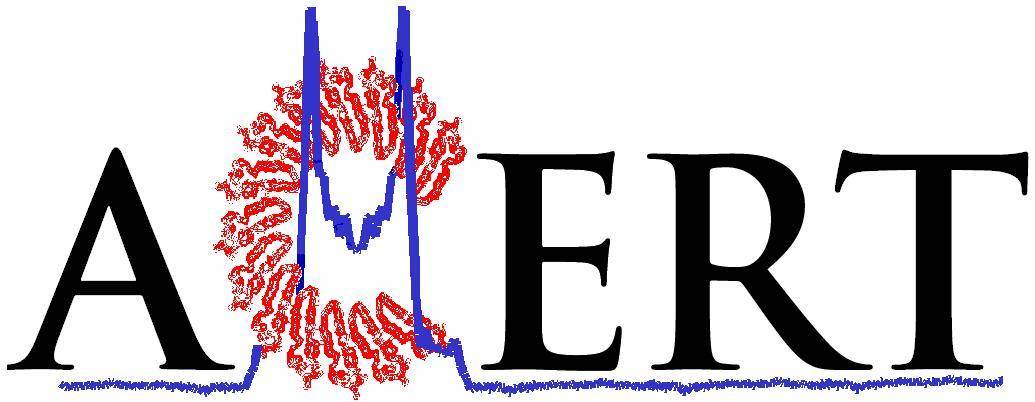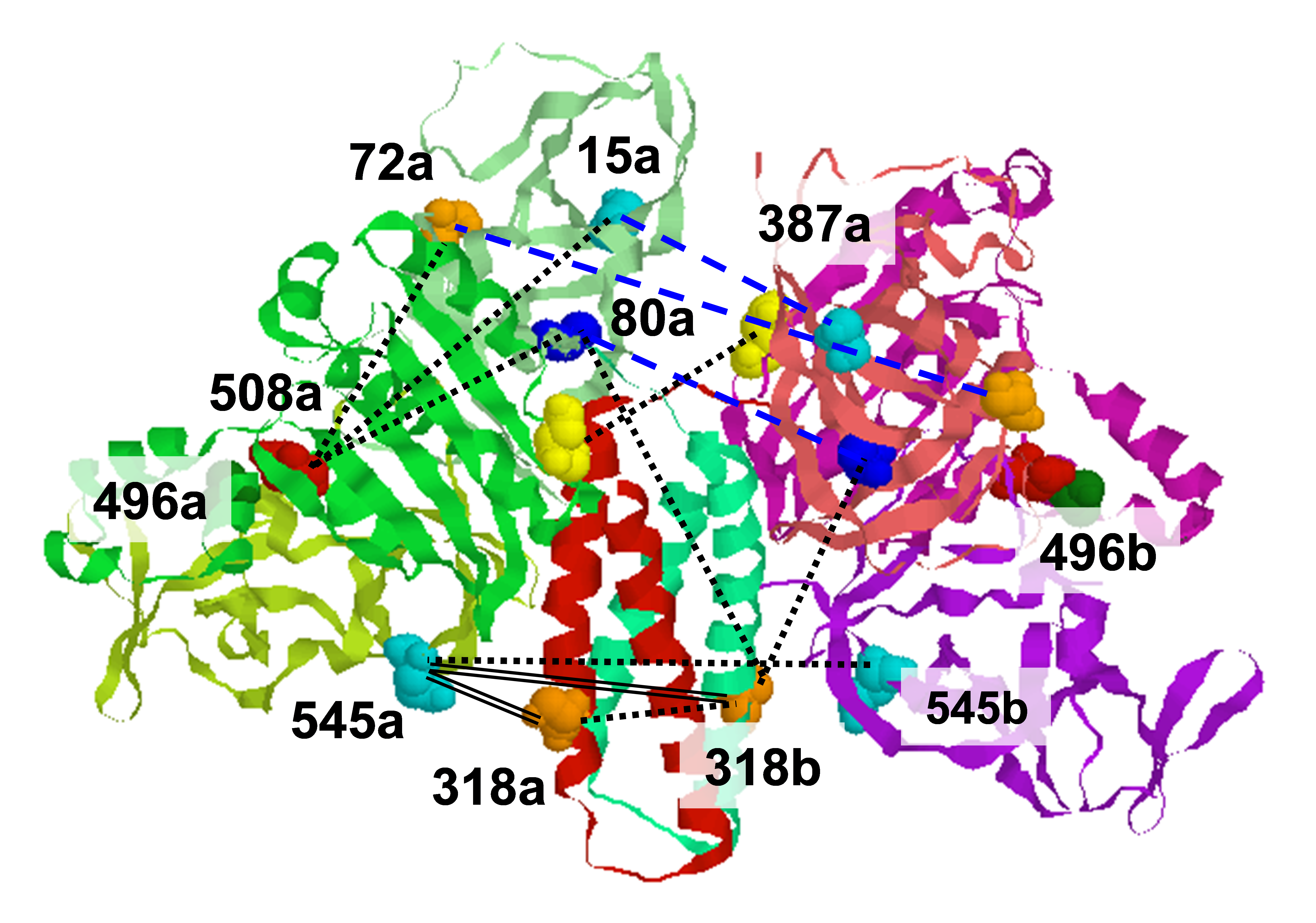.svg) National Institute of General Medical Sciences |
 |
 |
National Biomedical Resource for |
| ACERT's Service and Collaborative Projects | ||
Bacterial chemotaxis refers to the mechanism of bacterial movement in response to gradients of nutrients and repellents. It exhibits remarkably wide dynamic range and high sensitivity. A variety of signal transduction pathways in bacteria, fungi, and plants involve histidine kinases. In bacterial chemotaxis, autophosphorylation of the histidine kinase, CheA, is regulated by chemoreceptors and an adapter protein CheW. CheA phosphorylates CheY; Phospho-CheY interacts with the flagellum motor and switches the sense of rotation. One of the fundamental questions of this complex assembly is the ternary structure of the signaling complex of the CheA dimer, two CheW's, and the receptor dimer. Whereas each individual sub-unit protein could be studied by crystallography or NMR, neither of these familiar techniques could address this six protein complex. However, we have succeeded for the first time in determining the structure of this complex. We have shown that the receptor binds and stabilizes the regulatory domains of CheA. Our direct distance measurements by pulsed dipolar ESR (PDS) between the P3 domain (of CheA) receptor (see top Figure) have indicated that the two interact with their helical axis running anti-parallel to each other (see bottom Figure). This was in contrast to our conventional wisdom that they would be parallel (see bottom Figure). We obtained additional evidence from cross-linking experiments, which indicate that the tip of the receptor lies in close proximity to the N-termini of CheW. Also the reduced separation of the P5 domains (of CheA) indicate an asymmetric CheA dimer when the receptor is bound. Publication: J. Bhatnagar, P.P. Borbat, A.M. Pollard, A.M. Bilwes, J.H. Freed, and B.R. Crane, Biochemistry, 49, 3824-3841 (2010); PMC2873776 |
||
|
||
|
Jaya Bhatnagar, Abiola M. Pollard, (Department of Chemistry and Chemical Biology, Cornell University, Ithaca, NY 14853) Peter P. Borbat, Jack H. Freed, (National Biomedical Center for Advanced ESR Technology (ACERT), Department of Chemistry and Chemical Biology, Cornell University, Ithaca, NY 14853) Alexandrine M. Bilwes, and Brian R. Crane (Department of Chemistry and Chemical Biology, Cornell University, Ithaca, NY 14853) |
||
|
|
About ACERT Contact Us |
Research |
Outreach |
ACERT is supported by grant 1R24GM146107 from the National Institute of General Medical Sciences (NIGMS), part of the National Institutes of Health. |
|||||
| ||||||||